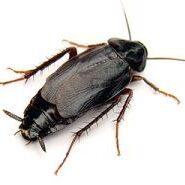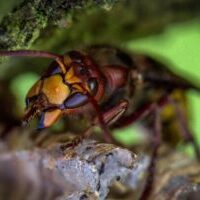
FUNGUS GNATS
Fungus gnats are small flies that infest soil, potting mix, other container media, and other sources of organic decomposition. Their larvae primarily feed on fungi and organic matter in soil, but also chew roots and can be a problem in greenhouses, nurseries, potted plants and interior plantscapes.
Fungus gnats are dark, delicate-looking flies similar in appearance to mosquitoes. Adult fungus gnats have slender legs with segmented antennae that are longer than their head. Their long antennae distinguish them from the more robust short flies. Although a few species are up to 1⁄2 inch long, fungus gnat adults commonly are about 1⁄16 to 1⁄8 inch long. Wings are light gray to clear, and some species have a Y-shaped wing vein.
Because adult fungus gnats are attracted to light, you first might notice these pests flying near windows indoors. However, in comparison with the common housefly, fungus gnats are relatively weak fliers and usually don’t move around much indoors. Fungus gnats often remain near potted plants, growing media, foliage, compost, and wet mulch piles.
Females lay tiny eggs in moist organic debris or potting soil. Larvae have a shiny black head and an elongated, whitish-to-clear, legless body. They eat organic mulch, leaf mold, grass clippings, compost, root hairs, and fungi. If conditions are especially moist and fungus gnats are abundant, larvae can leave slime trails on the surface of media.
Adult fungus gnats don’t damage plants or bite people; their presence is primarily considered a nuisance. Larvae, however, when present in large numbers, can damage roots and stunt plant growth, particularly in seedlings and young plants. Significant root damage and even plant death have been observed in interior plantscapes and in houseplants when high populations were associated with moist, organically-rich soil.
Fungus gnats develop through four stages—egg, larva, pupa, and adult. The tiny eggs and oblong pupae occur in damp organic media where females lay eggs and larvae feed. At 75°F, eggs hatch in about 3 days, the larvae take approximately 10 days to develop into pupae, and about 4 days later the adults emerge. An entire generation of fungus gnats can be produced in about 17 days depending upon temperature. The warmer it is, the faster they will develop and the more generations will be produced in a year.
If you have infested plants, don’t move them to new areas where flies can emerge to infest other pots. In home situations where fungus gnat adults are a nuisance, it may be possible to reduce the problem by using sticky traps. Insecticides are rarely warranted to control these flies in and around homes. However, if you do apply an insecticide for fungus gnats, consider using pyrethrins or a pyrethroid insecticide for temporary but fast-acting control. Spray the surface of potting soil and plant parts where adults typically rest. Be sure the product is labeled for your particular use (e.g., for “house plants”) and read and follow the product’s directions. A synergist (such as piperonyl butoxide, or PBO) may increase pyrethrum effectiveness. Suggested PCO Products include Tempo SC Ultra, Onslaught, Pro-Control Fogger, 565 PlusXLO, Temprid SC, etc.
EXPERTS IN PEST CONTROL SINCE 1970!
Enter your information or call
(816) 279-2000
By clicking “GET ESTIMATE” I authorize Preferred Pest Control to contact me at this number. I understand I am not required to make a purchase.
PREFERRED PEST CONTROL
At Preferred Pest Control & Home Inspections, we offer comprehensive indoor and outdoor pest extermination and treatment services to stop infestations at their source. Our qualified exterminators are equipped to inspect your home environment, identify the scope of the problem, and determine the best course of action to eliminate those unwanted pests.
And when you hire us, you’ll benefit from our:
-
Reasonable pest extermination rates.
-
Easy, convenient appointment scheduling.
-
Dedication to your safety and comfort.
If you think you might have a pest problem, don’t wait to get help. Call today for more information or to request an estimate.
As the leading pest extermination provider in NW Missouri and NE Kansas, we're equipped to handle any pest that may pop up and protect your property from future problems.
AREAS WE SERVICE












